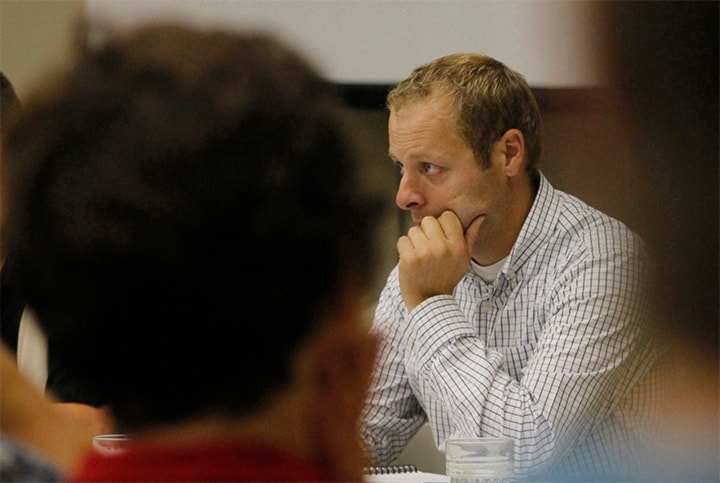More than a year after a raucous Naramata meeting filled with opponents of a plan to ban vehicles on parts of the KVR Trail, officials are finally closing in on a possible compromise.
“I don’t think we anticipated the degree to which some members of the community want to continue driving on what we consider to be the Trans Canada Trail, so that’s certainly taken us a little bit longer to resolve,” said John Hawkings, the B.C. government’s trails manager.
A draft concept plan for the KVR Trail between Naramata and Chute Lake was unveiled at the meeting in September 2012.
While the intent of the plan was to sort out conflicts between motorized and non-motorized users, most critics were concerned about an outright ban on passenger vehicles on that section of the trail.
They worried that people who aren’t physically able to walk in, or ride an ATV, would effectively be prevented from visiting such trail landmarks as the Little Tunnel or Rock Ovens Park.
Hawkings went back to the drawing board and has since ordered an engineering assessment to see if it would be possible to safely allow continued vehicle access from near Glenfir Road to Little Tunnel.
“One of the main issues we’re dealing with is the KVR was not constructed to be a road where vehicles pass each other, not to mention we do have increased pedestrian and cycling traffic on the trail,” he said, outlining issues the assessment will address.
Another option would be punching in a route from North Naramata Road to Little Tunnel, although Hawkings said allowing continued access from Glenfir is “the more feasible solution.”
Vehicle access to other features, like Adra Tunnel and Rock Ovens Park, could be maintained with minimal work to existing roads and trails off the KVR, he added.
Hawkings expects the engineering assessment to be complete “any time now.” Its findings will be added to a revised concept plan that will be sent up for ministerial approval.
“I certainly would hope that we could come to a resolution this year, and whatever the decision is going to be would be in place by spring,” he said.
Following the Naramata meeting, some residents formed a group dubbed Keep Our KVR Accessible to All, which has since had “fairly fruitful” meetings with the government, said spokesperson Gary Dickens.
“When it came down to it in our internal discussions, we reached the conclusion that what we really wanted was to be able to get to these heritage points,” he explained.
So members will likely accept a compromise solution that bans vehicles from some parts of the trail, but only if access to landmarks is preserved through alternate routes.
“Different people feel different ways, but generally, that’s what we’ve agreed on,” Dickens said.
He reiterated that KOKATA’s principal goal is preserving access to trail landmarks.
“They’re points of historic interest — not just for Naramata but for the whole province,” Dickens said.
Even with a final decision still outstanding, the B.C. government went ahead this fall with a surface upgrade on a six-kilometre portion of the KVR Trail from Naramata to Little Tunnel.
The new surface, composed of recycled asphalt mix, is already in place and receiving good reviews from cyclists.
“A guy told me (last week) he coasted from Little Tunnel all the way to Arawana Road without pedalling,” Hawkings said.
